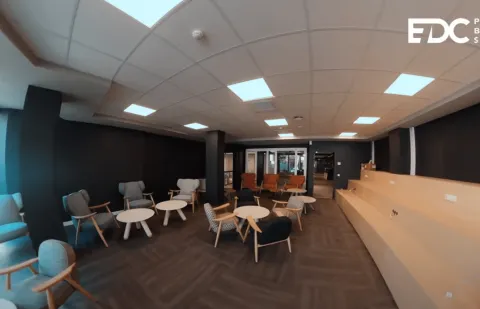
The era of marketing 4.0
After a slow but steady transition from marketing 1.0 (product-focused, the marketing taught to several generations) to marketing 2.0 (customer-focused), we barely had time to get used to marketing 3.0 (focused on values and individuals) before the it was time to switch to marketing 4.0, still focused on the individual but incorporating Big Data, CRM tools and—our focus here—marketing automation.
How do inbound marketing and marketing automation interact? What added value and what limits does this pair entail?
Inbound marketing, or how to be master of your own data
Inbound marketing diverges from traditional marketing by “reversing” the customer relationship. The principle is to attract prospects with relevant content rather than through advertising.
Inbound marketing establishes conversations at each step of contact with prospects by using appropriate content, based on their maturity in relation to the proposed offer. The strategy and methodology of inbound marketing can therefore be described as attract, convert, close and delight.
This therefore responds to marketers’ main concern: according to Hubspot, 63% of marketers believe their company’s main priority is to convert leads into customers. Therefore, due to its effectiveness, 59% of marketers increased their inbound marketing budgets in 2019 compared to 2018, at the expense of outbound marketing, which 38% see as overestimated.
How to save time (and thus money) with marketing automation?
Numerous levers are activated in the inbound marketing process, including marketing automation, which is especially useful in helping companies save significant time, providing marketing teams with added value in productivity.
This refers to software platforms designed to use automated solutions to replace manual, repetitive, secondary processes with little added value, such as sending emails, classifying prospects, creating tasks for the commercial team, etc.
Marketing automation essentially addresses five important steps in inbound marketing (reviving cold leads, lead classification, lead nurturing, lead scoring and sales-marketing alignment) through changing scenarios that can adapt to each targeted profile for a more compelling and effective final result.
Better than any speech, the numbers speak for themselves: 51% of companies use marketing automation; emails sent from B2B automation marketing software have an open rate 77% higher than regular emails; 11 times more B2B companies used marketing automation during the 2014-2019 period as compared to the 2009-2014 period (sources: Relaymark.com and Forceplus.com)
In short, data puts an end to “handcrafted” marketing.
A winning duo
Even with a well-thought-out inbound marketing strategy, conversion rates (the ratio between the number of visits and number of leads obtained) on websites may remain low. This is where marketing automation takes over to increase the number of leads and convert cold leads into hot business opportunities (lead nurturing).
Marketing automation serves the inbound marketing strategy. It should meet the objectives that you have set and the associated performance indicators.
In short, it makes it possible to capitalise on all the multichannel campaigns from the contact’s behavioural profiles.
Marketing automation is not automatic
The technology serves people but does not replace them.
The automation tools are not automated themselves. They require human intervention and good analysis in order to benefit from their potential. The time marketers save on repetitive tasks must be used wisely in order to make good use of marketing automation.
Furthermore, we must keep in mind that the customer relationship is a world that still needs special and more meaningful human contacts.
Do you want to take training in marketing? Discover our corresponding programs:
NEWS
SAVE THE DATE
To know our latest news
Your campus at La Défense !
29 09 2021 | Our news
Watch a video of your new campus in the heart of La Défense
Rentrée décalée janvier 2022 : une nouvelle chance d’intégrer une Grande Ecole de management sans perdre votre année !
24 08 2021 | Admissions I Concours I Nos actualités
Vous êtes titulaire du baccalauréat et toujours en recherche de formation en grande école ? Vous avez choisi une orientation pour vos études supérieures qui ne vous correspond pas ? Dès le 25 janvier 2022, EDC Paris Business School vous offre la possibilité de ne pas perdre votre année grâce à sa rentrée décalée en cursus accéléré pour le Programme Grande Ecole et le Bachelor.


